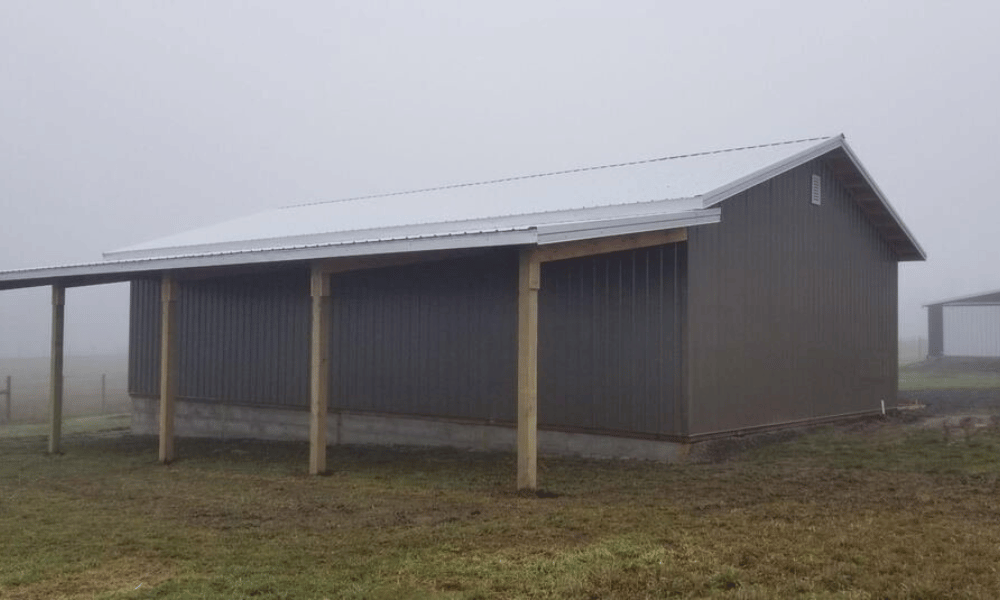Introduction
Starting a shed project can be exciting and daunting at the same time. You might have visions of a beautiful wooden structure, a cozy workspace, or even a pole barn garage that doubles as your personal retreat. But before you dive headfirst into construction plans, it’s vital to take a step back and think things through. In this article, we’ll explore five key considerations that will help you avoid the heartbreak of building regrets. So grab a cup of coffee and get ready to embark on this enlightening journey.
Avoid the Heartbreak: Five Key Considerations Before Starting Your Shed Project!
1. Understanding Your Purpose: What Do You Really Need?
Before you even think about blueprints and materials, you need to understand what you want from this shed. Are you looking for extra storage space? A workshop for your hobbies? Or perhaps a pole barn garage to house your vehicles?
Defining Your Shed's Function
- Storage Space: If you're just looking for storage, consider how much space you'll actually need. Take inventory of your belongings and maybe even plan for future acquisitions. Workshop: If you're planning on setting up shop in there, think about whether you'll need electricity, ventilation, or heating. Garage Use: A pole barn garage is fantastic for vehicle storage but requires extra consideration regarding height, door size, and access.
Assessing Potential Challenges
Each purpose has its own unique challenges. For example:
- How will local zoning laws affect your plans? Do you have adequate drainage in your chosen location?
2. Location Matters: Choosing the Right Spot
Once you've nailed down what your shed’s purpose will be, it's time to find the perfect location.
Considerations for Placement
- Accessibility: Ensure that there's easy access for vehicles if you're using it as a garage. Sunlight & Shade: Think about how sunlight will impact temperature inside; too much sun may cause overheating. Proximity to Other Structures: Make sure it doesn’t crowd your yard or violate any property lines.
Environmental Factors
Also consider:
- Soil quality—ideal conditions can significantly affect foundation work. Local wildlife—if you're in an area with lots of critters, ensure that they won't become uninvited guests.
3. Budgeting Wisely: How Much Is This Going to Cost Me?
Let’s face it—money talks! And it can also walk away if you’re not careful.
Breaking Down Costs
To develop an accurate budget:
Materials: Wood type, insulation options, roofing material—all these choices will impact your bottom line. Labor: Will you hire professionals or go DIY? Factor in costs accordingly. Permits & Fees: Don’t forget to check local regulations; sometimes permits can cost more than expected.Creating a Contingency Fund
Always set aside 10%-20% Cottage Grove pole barn solutions of your total budget as a contingency fund for unexpected expenses that may arise during construction.
4. Design Details: Planning Like a Pro
Now that you've decided on the purpose and budget, let's talk design!
Choosing the Right Style
From rustic charm to modern sleekness, here are some popular styles:
- Traditional Wooden Sheds Metal Pole Barn Garage Tiny House Sheds
Consider which style fits best with your existing property aesthetics.

Blueprints Matter!
Whether you're sketching out plans yourself or hiring someone else:
- Ensure all measurements are accurate. Consider future expansion; maybe add windows or shelving later on?
5. Building Regulations & Permits: Don’t Get Caught Off Guard!
Nobody likes dealing with red tape but ignoring building codes can lead to significant headaches down the road.
Understanding Local Zoning Laws
Research local zoning requirements early in the process:
- What size structures are allowed? Are there restrictions on placement?
Obtaining Necessary Permits
Make sure to secure any necessary permits before breaking ground; this could save you from fines or having to dismantle what you've built!
FAQs
1. What is the average cost of building a shed?
The cost varies widely based on size and materials but generally ranges from $500 to $5,000 or more.
2. Do I need a permit for my shed?
In most areas, yes! Always check with local authorities before starting construction.
3. How long does it take to build a shed?
Typically anywhere from one week to several months depending on complexity and whether you're handling it yourself or hiring pros.
4. Can I build my shed myself?
Absolutely! Many folks opt for DIY projects; just be prepared for challenges along the way.
5. What's better—wooden sheds or metal sheds?
It depends on your needs! Wooden sheds offer aesthetic appeal while metal sheds provide durability and low maintenance.
6. How do I maintain my shed once it's built?
Regular inspections for damage or wear are key; keep gutters clear and paint/reseal as needed!
Conclusion
Building a shed can be one of those rewarding projects that transform your outdoor space into something truly special—a place where creativity flourishes or where tools are kept safe and organized. But as we've discussed throughout this guide titled “Avoid the Heartbreak: Five Key Considerations Before Starting Your Shed Project!”, it's crucial not to rush in without thinking things through first.
By understanding your purpose, choosing an appropriate location, budgeting wisely, planning designs carefully, and adhering to regulations—you'll be well-equipped to tackle this project head-on without heartache down the line! So roll up those sleeves—you’ve got this!
This article aims not only to inform but also empower you with all necessary insights before embarking on this exciting journey towards creating your dream shed—or maybe even that versatile pole barn garage you've always wanted! Happy building!